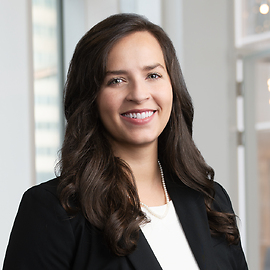On June 15, 2020, and June 24, 2020, New York Governor Andrew Cuomo issued two Executive Orders (“EO”) numbers 202.45 and 205, which address COVID-19 travel-related restrictions. EO 202.45 temporarily modifies New York State’s pandemic-related Sick Leave Law to prohibit employees from receiving paid sick leave benefits if, as of June 25, 2020, they travel to a “restricted state” for non-work related reasons and contract COVID-19. EO 205 (the “Travel Advisory”) imposes a 14-day quarantine requirement on travelers from a “restricted state” entering New York. For the purposes of both orders, a “restricted state” is a state with a COVID-19 positive test rate higher than 10 per 100,000 residents, or higher than a 10% test positivity rate, over a seven day rolling average, based on data provided by the states.
The list of “Restricted States” is posted on New York’s COVID-19 Travel Advisory website. Data is reviewed weekly to determine whether a particular state should be added or deleted from the list. As of July 14, 2020, the following 22 states have been designated “restricted states”:
| Alabama | Kansas | Oklahoma |
| Arkansas | Louisiana | South Carolina |
| Arizona | Minnesota | Tennessee |
| California | Mississippi | Texas |
| Florida | New Mexico | Utah |
| Georgia | North Carolina | Wisconsin |
| Iowa | Nevada | |
| Idaho | Ohio |
The Travel Advisory requires travelers to quarantine for 14 days from the date they were in a restricted state. The quarantine mandate does not apply, however, to individuals who have passed through restricted states for a “limited duration,” i.e., less than 24 hours. Examples of “limited duration travel” include “stopping at rest stops for vehicles, buses, and/or trains; or lay-overs for air travel, bus travel, or train travel.”
Quarantine Requirements
Pursuant to the Travel Advisory, the New York Department of Health (“DOH”) released Guidance providing the following requirements for a quarantined individual:
- The individual must not leave the quarters that they have identified as suitable for his or her quarantine.
- The individual must be situated in separate quarters with a separate bathroom facility for each individual or family group that is quarantined, with access to a sink, soap, paper towels and, in any shared bathroom, cleaning supplies (e.g., household cleaning wipes and bleach).
- The quarters must have a supply of face coverings, to be worn if the individual becomes symptomatic.
- The quarantined individual must implement a self-screening procedure in his or her separate quarters for monitoring temperature and the development of other COVID-19 symptoms.
- The individual must self-quarantine from household members as soon as he or she develops a fever (100.0° or higher) or other COVID-19 symptoms, such as in a separate room with a door. Given that an exposed person might become ill while sleeping, the exposed person must sleep in a separate bedroom from other household members.
- Food must be delivered to the quarantined person’s quarters, and garbage must be bagged and left outside for routine pick up (special handling is not required).
- A household member or other person must be designated to notify a nearby medical facility, if the individual begins to experience more than mild symptoms and appears to require medical assistance.
- The quarters must be secure against unauthorized access.
Limited Exemption for “Essential Workers”
The Guidance provides a limited exception for “essential workers,” based on the duration of time they spend in restricted states, as well as the intended length of time they plan to be in New York. An “essential worker” is (1) any individual employed by an entity included in the Empire State Development Essential Business list; or (2) “any individual who meets the COVID-19 testing criteria, pursuant to their status as either an individual who is employed as a health care worker, first responder, or in any position within a nursing home, long-term care facility, or other congregate care setting, or an individual who is employed as an essential employee who directly interacts with the public while working,” under the DOH May 31, 2020 Protocol for COVID-19 Testing, or (3) “any other worker deemed such by the Commissioner of Health.”
The Guidance does not state how the exceptions for essential workers are limited based on the duration of time in restricted states. It does, however, specify the requirements for essential workers based on how long they remain in New York and establishes varying requirements for “Short Term” (i.e., less than 12 hours), “Medium Term” (i.e., less than 36 hours) and “Long Term” (i.e., several days) stays. By way of summary:
- Short Term travelers (e.g., essential workers delivering goods, awaiting flight layovers and other short duration activities) should stay in their vehicle and/or limit personal exposure by avoiding public spaces, monitor their temperature and signs of symptoms, wear a face covering when in public, maintain social distance, clean and disinfect workspaces, and avoid extended periods in public, contact with strangers and large congregate settings.
- Medium Term travelers (e.g. essential workers delivering multiple goods, awaiting a longer flight layover or other medium duration activities) should monitor their temperature and signs of symptoms, wear a face covering when in public, maintain social distance, clean and disinfect workspaces, and avoid public spaces as well as extended periods in public and congregate settings.
- Long Term travelers (e.g., essential workers working on longer projects, fulfilling extended employment obligations and other longer duration activities) should seek diagnostic testing within 24 hours of arrival to ensure they are not COVID-19 positive; in addition, for at least 7 days they must avoid extended periods in public, contact with strangers and large congregate settings; and for at least 14 days they should monitor temperature and signs of symptoms, wear a face covering when in public maintain social distance, and clean and disinfect workspaces.
Upon their return to New York, essential workers based in New York who travel to a restricted state, must, along with their employers, comply with previously issued DOH guidance for employees returning to work after a suspected or confirmed case of COVID-19 or after close contact with a person with COVID-19, unless the DOH guidance is superseded by specific industry guidance.
Amendment of New York State’s Sick Leave Law
EO 202.45 temporarily modifies New York State’s Sick Leave Law for COVID-19 to make employees who voluntarily travel to a restricted state after June 25, 2020 ineligible for New York paid sick leave benefits, unless the travel was taken “as part of the employee’s employment or at the direction of the employee’s employer.” The Sick Leave Law already exempted employees who traveled to countries with a level two or three travel health designation from the Centers for Disease Control and Prevention.
Blog Editors
Authors
- Associate
- Member of the Firm

